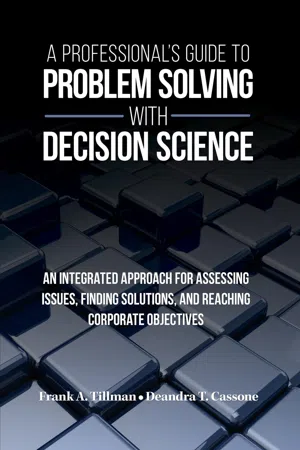![]()
Part II
Case Studies
![]()
8
Logistics Service Provider
8.1 Introduction
This case study assesses a company that is a full-service supply chain provider. This company is owned by a parent company, but functions as a completely separate business unit with its own independent president, board of directors, operating capital, and business processes. The parent company uses this division as its full-service provider; however, it has structured this business unit so that if it does not provide adequate service at a low price, this business unit can be sold off, and a higher performing business unit can be bought in its place. This structure is designed to ensure that the logistics business unit is competitive with the industry.
The parent company sells high-dollar construction equipment throughout the world. The company services both the commercial and military sector. Availability of equipment is critical to meet changing demand, so demand planning, forecasting, inventory investment, and time to market is crucial. Many of the pieces of equipment have long lead times to produce. The company sells equipment on a contract basis and also rents this equipment on an as-needed basis.
Supply chain business unit management understands the need to be competitive and, therefore, knows that it needs to improve in a number of areas to perform at industry standards or higher. Because of this, they have decided to employ the previously described methodology to improve their profitability in the overall operations.
8.2 Define the Objectives
In this scenario, there are multifaceted objectives that the supply chain business unit must meet with the parent company. The business unit must provide high-level performance and low-cost business solutions. The business unit must also help to support the objectives of the parent corporation as a whole. Knowledge of both the parent company objectives and the business unit company objectives must be integrated to successfully operate the combined businesses.
Additionally, the company needs to have a clear understanding of the existing operations, systems, and processes to know current performance levels and what needs to improve so that the business unit provides high-quality services to the parent company and other clients. Multiple facilities are operated by the business unit. Currently, a number of other companies use the supply chain services. Operating performance differs at the various facilities and differs for the various companies that contract these services. These operations must not only meet the parent company’s requirements, but also must be flexible enough to contract these supply chain services to other companies to improve their performance levels.
Multiple key stakeholders must be involved to determine corporate objectives. These stakeholders would include at a minimum sales, marketing, operations, information technology, and finance personnel from the corporation. Executive leadership, especially from the functional areas of operations, finance, information technology, and sales personnel need to be engaged in this process. In all, the business unit’s success relies on the parent company success and its capability to perform and be profitable and to market its services to other companies. Problems existing within the business unit impact the capability for many different organizations to achieve their goals. Equally important is that the related functional areas may be significantly contributing to the problems that exist in the business unit because of the close operating ties, system interfaces, processes, and requirements. Upstream impacts and downstream results must also be considered if there are interactions of the functions.
Overall, a number of key areas exist that both the parent company and the subsidiary would like to see improved.
Operational performance—This involves ensuring that customers have the right product at the right time.
Financial performance—The parent company wants the business unit profitable, maintaining good customer service, minimizing inventory levels, and minimizing operating costs.
Sales—The business unit wants to grow the business. There is a growing market for outsourcing, and it wants to be a leader in the field.
Information technology—It is critical these days that information passes seamlessly from one corporation to another. Electronic data interchange and direct system interfaces are important to provide real-time information for operations and sales.
These general objectives can be translated into specific objectives and measured to evaluate the progress of improvement in an organization.
8.3 Developing Decision Criteria and Metrics
The following steps have been used to develop the overall objectives, decision criteria, and metrics for the analysis.
8.3.1 Step 1: Establish the Objectives and Goals
Through executive meetings and the use of group decision-making techniques, the general objecti...
